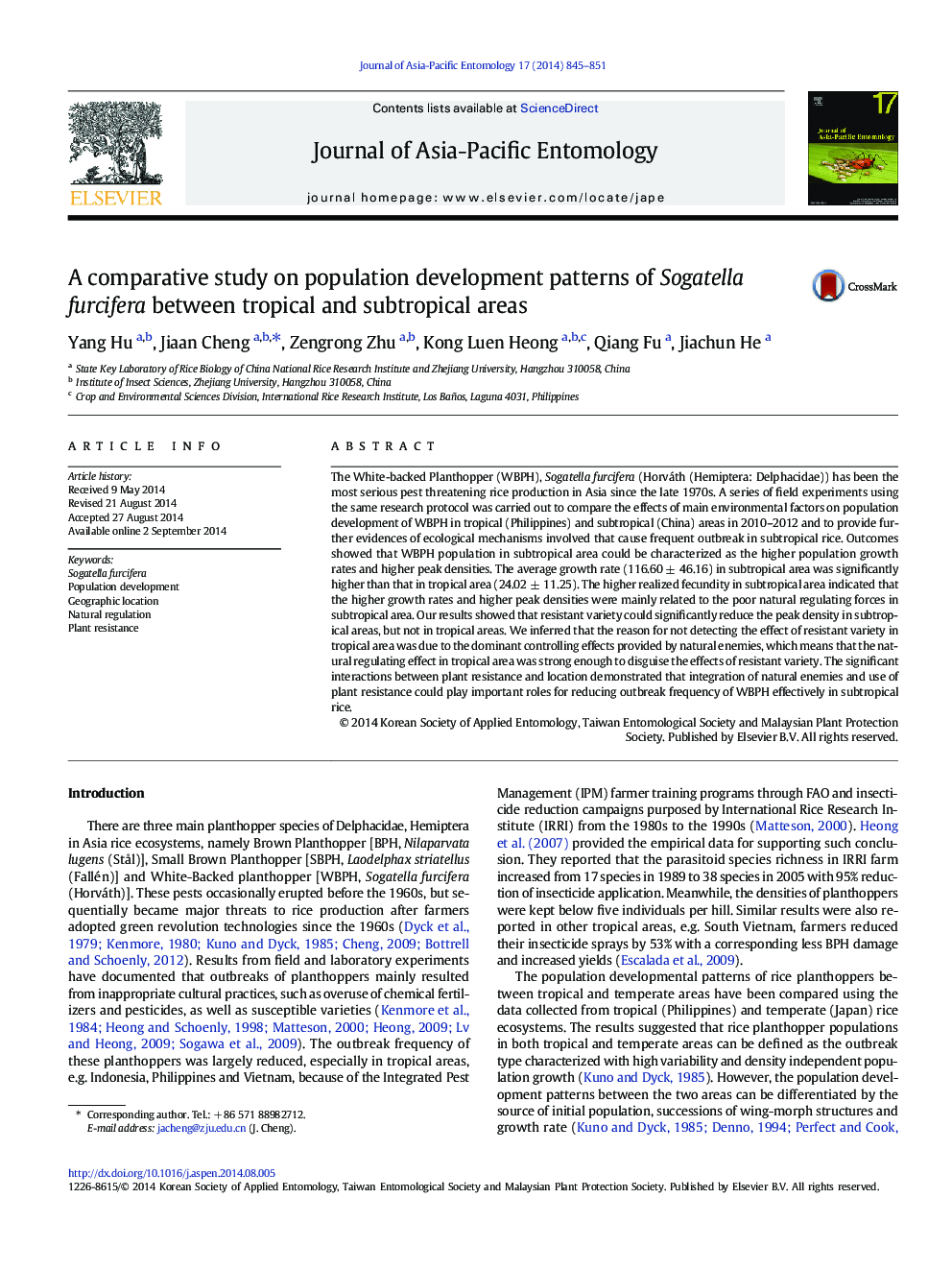| کد مقاله | کد نشریه | سال انتشار | مقاله انگلیسی | نسخه تمام متن |
|---|---|---|---|---|
| 4524530 | 1323581 | 2014 | 7 صفحه PDF | دانلود رایگان |

• White-backed planthoppper (WBPH) populations in tropical area and in subtropical area are preformed at very differently ways.
• The population growth rate and the peak density in subtropical area were significantly higher than these in tropical area.
• The reason of leading the lower growth rate and the peak density in tropical area was due to the natural regulation force.
• In addition, the natural regulation force in tropical area was great enough for disguising the effect of rice variety.
The White-backed Planthopper (WBPH), Sogatella furcifera (Horváth (Hemiptera: Delphacidae)) has been the most serious pest threatening rice production in Asia since the late 1970s. A series of field experiments using the same research protocol was carried out to compare the effects of main environmental factors on population development of WBPH in tropical (Philippines) and subtropical (China) areas in 2010–2012 and to provide further evidences of ecological mechanisms involved that cause frequent outbreak in subtropical rice. Outcomes showed that WBPH population in subtropical area could be characterized as the higher population growth rates and higher peak densities. The average growth rate (116.60 ± 46.16) in subtropical area was significantly higher than that in tropical area (24.02 ± 11.25). The higher realized fecundity in subtropical area indicated that the higher growth rates and higher peak densities were mainly related to the poor natural regulating forces in subtropical area. Our results showed that resistant variety could significantly reduce the peak density in subtropical areas, but not in tropical areas. We inferred that the reason for not detecting the effect of resistant variety in tropical area was due to the dominant controlling effects provided by natural enemies, which means that the natural regulating effect in tropical area was strong enough to disguise the effects of resistant variety. The significant interactions between plant resistance and location demonstrated that integration of natural enemies and use of plant resistance could play important roles for reducing outbreak frequency of WBPH effectively in subtropical rice.
Comparisons of the dynamics of WBPH at different areas.Figure optionsDownload as PowerPoint slide
Journal: Journal of Asia-Pacific Entomology - Volume 17, Issue 4, December 2014, Pages 845–851